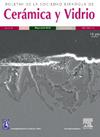Ventilated facade system: A review
IF 2.7
4区 材料科学
Q1 MATERIALS SCIENCE, CERAMICS
Boletin de la Sociedad Espanola de Ceramica y Vidrio
Pub Date : 2025-05-01
DOI:10.1016/j.bsecv.2025.100443
引用次数: 0
Abstract
A ventilated facade can be understood as a cladding system fixed to the external wall of the building using mechanical anchor points. The ventilated facade, in addition to its aesthetic effect, improves the thermal (thermal comfort), acoustic and energy efficiency performance of the building. The ventilated facade (or facade) system (VFS) is a construction alternative using non-adhered industrialised elements. Its use has increased substantially in recent years and it has been chosen by architects as a suitable solution for retrofitting existing buildings and for buildings to be built. It is an envelope solution that is suitable for a variety of building types, climates and design configurations. The influence of VFS on the thermal, energy and acoustic performance of buildings is a current topic of research and can be characterised as a sustainable solution in the construction industry. The aim of this article is to present the state of the art of current literature on the application of VFS technologies, in terms of thermal, energy and acoustic analysis, the performance of different coatings applied, fixing systems and the advantages and disadvantages of the system, in order to provide guidelines for future studies and projects.
通风立面系统:回顾
通风立面可以理解为使用机械锚点固定在建筑物外墙的包层系统。通风立面,除了它的美学效果,提高了建筑的热(热舒适),声学和能源效率性能。通风立面(或立面)系统(VFS)是一种使用非粘附工业化元素的建筑替代方案。近年来,它的使用大幅增加,建筑师们选择它作为改造现有建筑物和将要建造的建筑物的合适解决方案。它是一种适用于各种建筑类型、气候和设计配置的围护结构解决方案。VFS对建筑热、能源和声学性能的影响是当前研究的主题,可以被描述为建筑行业的可持续解决方案。本文旨在介绍VFS技术应用的最新文献,包括热、能量和声学分析,不同涂层的性能,固定系统以及系统的优缺点,以便为未来的研究和项目提供指导。
本文章由计算机程序翻译,如有差异,请以英文原文为准。
求助全文
约1分钟内获得全文
求助全文
来源期刊

Boletin de la Sociedad Espanola de Ceramica y Vidrio
工程技术-材料科学:硅酸盐
CiteScore
5.50
自引率
2.90%
发文量
72
审稿时长
103 days
期刊介绍:
The Journal of the Spanish Ceramic and Glass Society publishes scientific articles and communications describing original research and reviews relating to ceramic materials and glasses. The main interests are on novel generic science and technology establishing the relationships between synthesis, processing microstructure and properties of materials. Papers may deal with ceramics and glasses included in any of the conventional categories: structural, functional, traditional, composites and cultural heritage. The main objective of the Journal of the Spanish Ceramic and Glass Society is to sustain a high standard research quality by means of appropriate reviewing procedures.
 求助内容:
求助内容: 应助结果提醒方式:
应助结果提醒方式:


